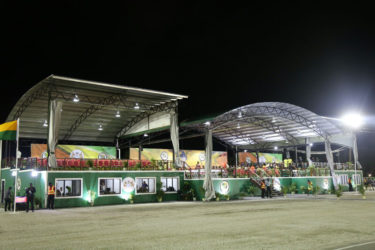The bleachers at D’Urban Park will not be dismantled as originally intended as government intends to preserve and improve the area and turn it into a facility for public events, President David Granger has said.
“The present thinking is that it will be improved and kept intact as Guyana’s major place for public events… The concept of dismantling stands is now literally off the table,” the President said on the Ministry of the Presidency’s programme, “The Public Interest,” which was aired on Friday.
“It is now unlikely that those stands would be dismantled. We have had a second look at it and the D’Urban Park is an institution which people have started to use.

We have had requests… churches have used the facility, we have had other social functions, parades have been held there so it is likely that D’Urban Park which is the single largest stadium in the country, will be kept as a place for public purposes and the stands would not be dismantled but preserved. The area will be protected against vandalism and any unsafe practices,” he said.
The original idea was that the site, which is part of a larger project to enhance Georgetown, would be developed to host the functions relating to Guyana’s 50th Independence Anniversary celebrations. This included the construction of 27 wooden stands which were to be dismantled after the May 26 float parade and sent to various community centres.
Many had questioned the logic of this given that hundreds of millions of dollars have been spent on the stands. Further, prior to the Ministry of Public Infrastructure being called in to take over the project, Stabroek News had highlighted several defects including the poor quality of wood used to build the stands and shoddy construction. The stands were subsequently reinforced.
Granger said that government’s focus is now on the community centres which would have been recipients of the dismantled stands.
In this regard, he said, the next step will be providing alternative seating arrangements at these community centres. He said that government is looking at developing facilities in the capital towns which “could be venues for public events.”
Meanwhile, asked about the amount of donations received, Granger indicated that he was not in a position to say how much private money was pumped into the D’Urban Park initiative. He said that the project had two phases: a public/private phase in which there were donations and a pure government phase.
He said there is no report before Cabinet as it relates to the overall expenditure. Minister of Public Infrastructure David Patterson had previously said that government funding of up to $150 million was available for the project, while efforts were being made to secure grant funding to cover the remainder of the works. This was after his ministry had taken over the project. Aside from this figure, the additional sums spent have not been made public.





